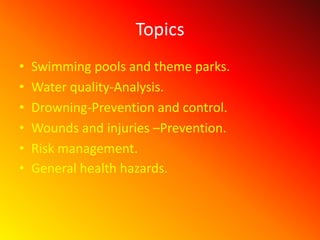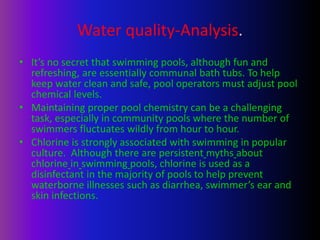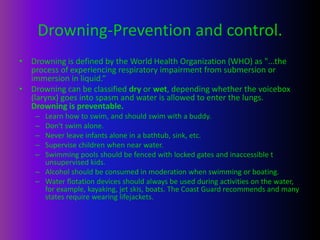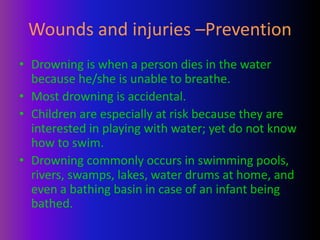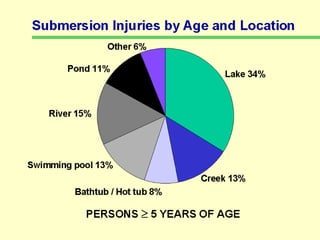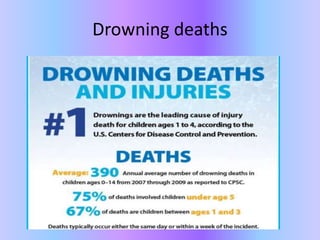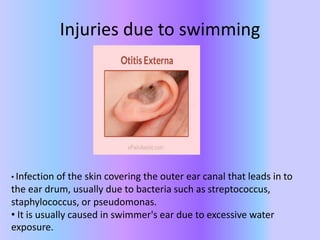Intergrated project
- 1. Intergrated Project Class 7B Group 4
- 3. The Health Risks Of Bathing In Recreational Water
- 4. Topics • Swimming pools and theme parks. • Water quality-Analysis. • Drowning-Prevention and control. • Wounds and injuries –Prevention. • Risk management. • General health hazards.
- 5. Swimming pools • A swimming pool, swimming bath, wading pool, or paddling pool is an artificial container filled with water intended for swimming or other water-based recreation. • Such artificial pools can be built either above or in-ground, and be constructed from materials such asconcrete (also known as gunite), metal, plastic or fiberglass. • They can be decorative or custom shape and size, or they may be of a standard size, the largest of which is the Olympic-size swimming pool. • The "Great Bath" at the site of Mohenjo-Daro in modern- day Pakistan was most likely the first swimming pool, dug during the 3rd millennium BC.
- 6. Water quality-Analysis. • It’s no secret that swimming pools, although fun and refreshing, are essentially communal bath tubs. To help keep water clean and safe, pool operators must adjust pool chemical levels. • Maintaining proper pool chemistry can be a challenging task, especially in community pools where the number of swimmers fluctuates wildly from hour to hour. • Chlorine is strongly associated with swimming in popular culture. Although there are persistent myths about chlorine in swimming pools, chlorine is used as a disinfectant in the majority of pools to help prevent waterborne illnesses such as diarrhea, swimmer’s ear and skin infections.
- 7. Drowning-Prevention and control. • Drowning is defined by the World Health Organization (WHO) as "...the process of experiencing respiratory impairment from submersion or immersion in liquid.“ • Drowning can be classified dry or wet, depending whether the voicebox (larynx) goes into spasm and water is allowed to enter the lungs. Drowning is preventable. – Learn how to swim, and should swim with a buddy. – Don't swim alone. – Never leave infants alone in a bathtub, sink, etc. – Supervise children when near water. – Swimming pools should be fenced with locked gates and inaccessible t unsupervised kids. – Alcohol should be consumed in moderation when swimming or boating. – Water flotation devices should always be used during activities on the water, for example, kayaking, jet skis, boats. The Coast Guard recommends and many states require wearing lifejackets.
- 8. Wounds and injuries –Prevention • Recreational water illnesses (RWIs) are caused by germs spread by swallowing or having contact with contaminated water in swimming pools. • RWIs include a wide variety of infections, such as gastrointestinal, skin, ear, respiratory, eye, neurologic, and wound infections. The most commonly reported RWI is diarrhea.
- 9. Wounds and injuries –Prevention • Drowning is when a person dies in the water because he/she is unable to breathe. • Most drowning is accidental. • Children are especially at risk because they are interested in playing with water; yet do not know how to swim. • Drowning commonly occurs in swimming pools, rivers, swamps, lakes, water drums at home, and even a bathing basin in case of an infant being bathed.
- 11. Drowning deaths
- 12. Injuries due to swimming • Infection of the skin covering the outer ear canal that leads in to the ear drum, usually due to bacteria such as streptococcus, staphylococcus, or pseudomonas. • It is usually caused in swimmer's ear due to excessive water exposure.
- 13. Risk management



